The First Olympic Games were held here in 776 B.C. and it is sure the games were international. This event is traditionally considered to be the first sure event in Greek history. Closer time span in given as summer of 776 B.C. or even 1st July 776 B.C. = exactly this time 2794 years ago! 🙂 Greeks had counted their calendar from this date – they always stated in which year of which Olympiad certain event took place. As Olympic Games were held every four years the counting followed the four year cycle. And so it continued from 1st July 776 B.C. until the end of the 4th century A.D.
But the history of this place is much older. On the southern slopes of Mount Kronos, close to the confluence of the Alpheus river with its tributary the Kladeus, there was a settlement as early as in the 3rd millenium B.C. This area was widely inhabited in Mycenean times – 1600-1100 B.C., too. Finds from these times can be seen in the Archeological museum situated next to the excavations. Seeing them alongside with other treasures from later periods of Olympia gives us a pretty good idea of how the place had looked like in the past.

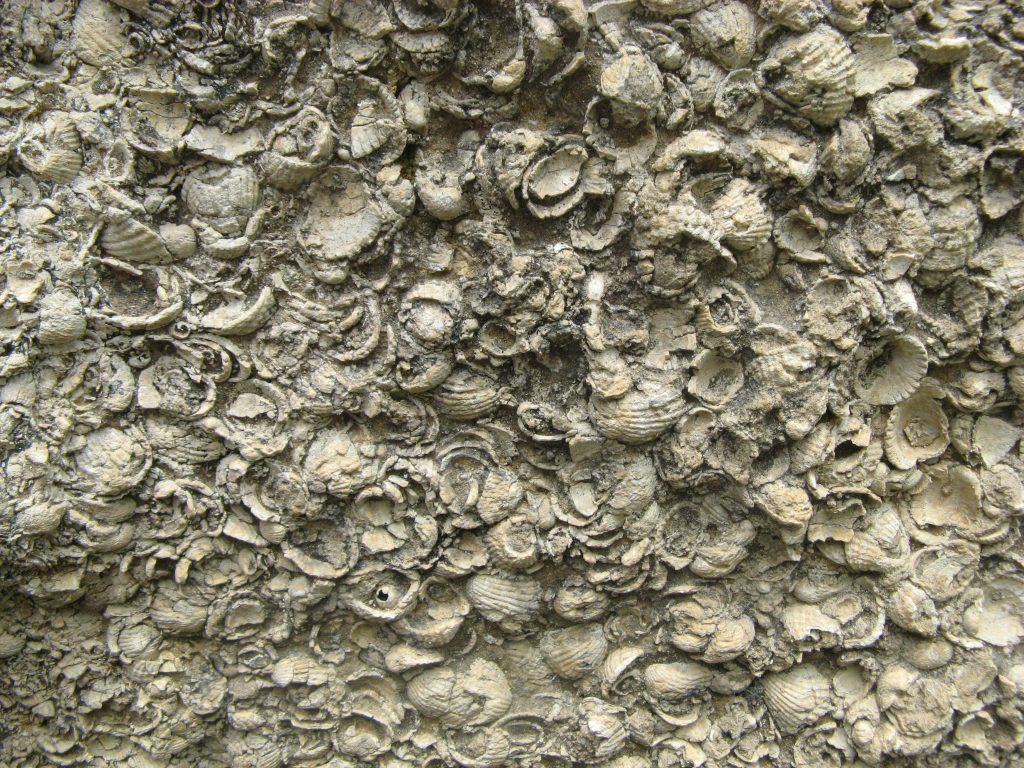

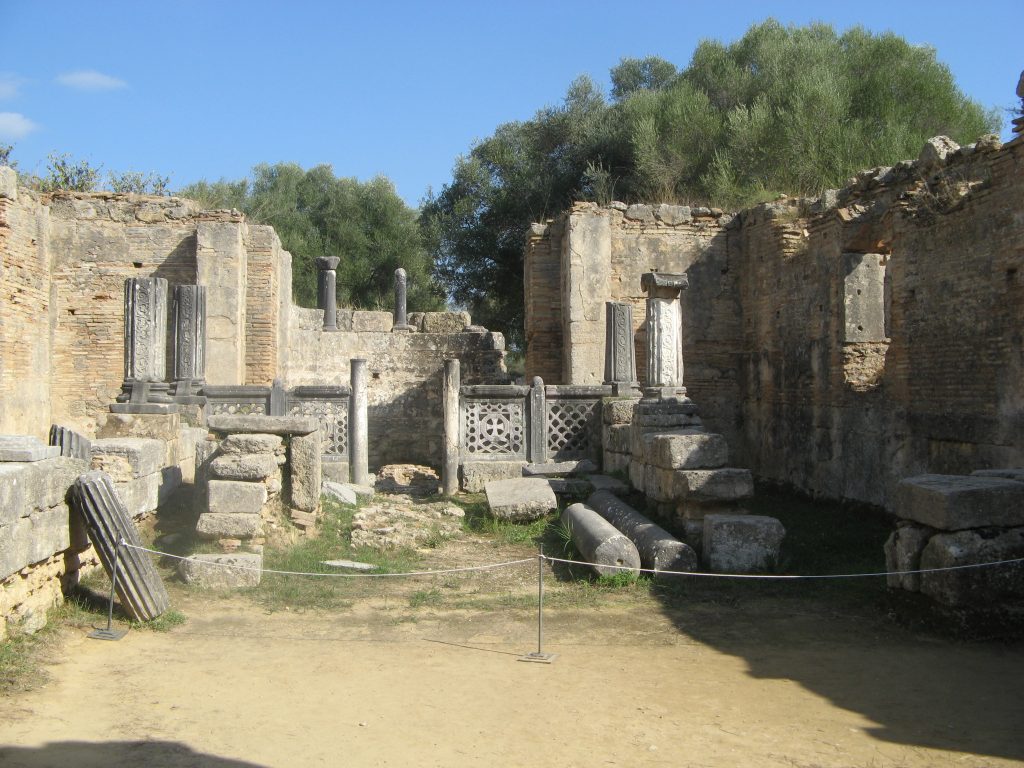
How interesting that we know almost nothing about Phidias as a person. We know that he came from Athens, he was born appr. in 500 B.C. and started as a painter. However he quickly achieved reputation as a sculptor. Sometime in 433 or 432 B.C., being accused of fraud, he was forced to leave Athens. And it turned out to be good for him! 🙂 He came here to Olympia and he created one of the 7 wonders of the ancient world! Chryselephantine (gold and ivory) statue of Zeus on the Throne – his masterpiece. In the antiquity the old Greeks claimed that everyone should see it once in a lifetime. Unfortunately the statue was destroyed and disappeared in the 5th century A.D.
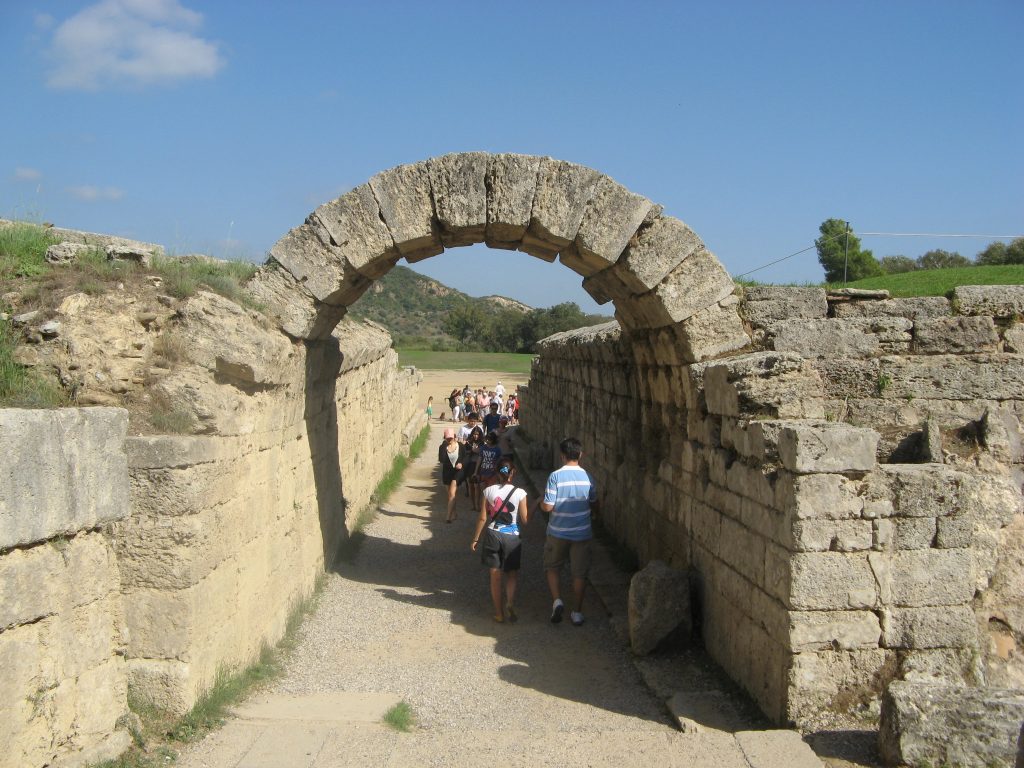

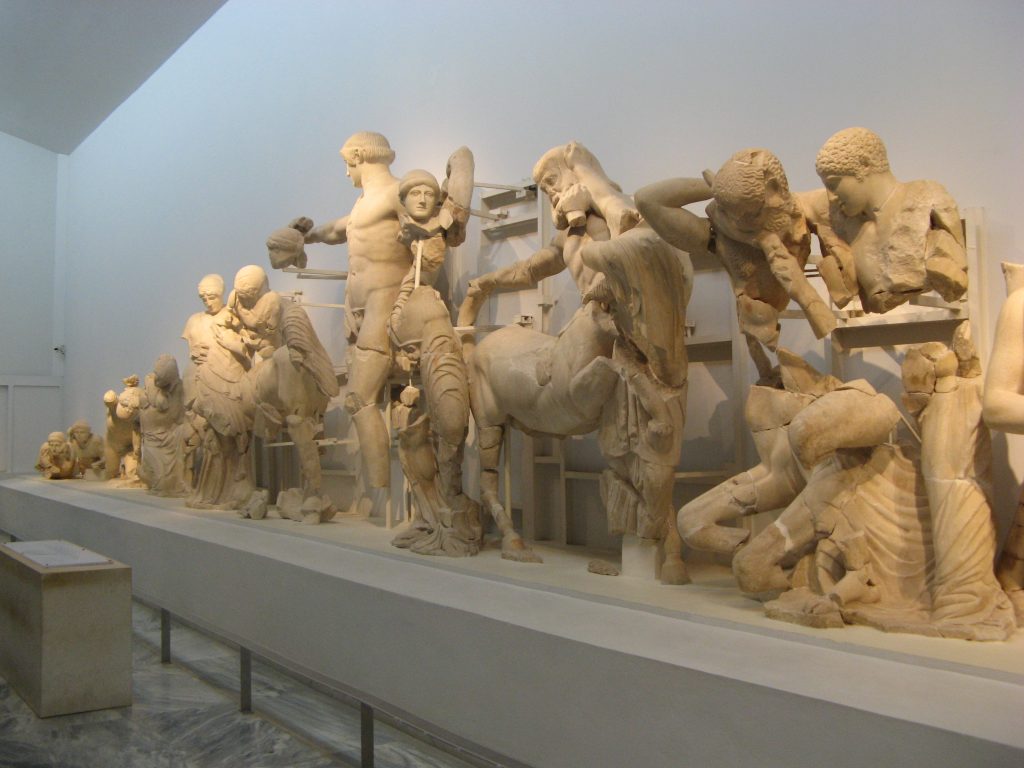
Centaurs were invited for the wedding of Lapithan king Peirithon. They got drunk there – this symbolised the win of animal side over human. They threw themselves upon the Lapithan women and tried to kidnap them. King Peirithon together with the Lapiths and Greek heroes started defending them. As they had no weapons with them they were fighting with whatever was there on hand – throwing vases and chairs upon Centaurs as well as fighting them with bare hands. Greeks won the battle and surviving Centaurs fled to the woods. This battle ranked among the most popular topics depicted by artists, especially because it symbolised the unity of Greeks against the Barbarians, resulting in the victory of justice over injustice, civilization over wild life of “people from the woods”.
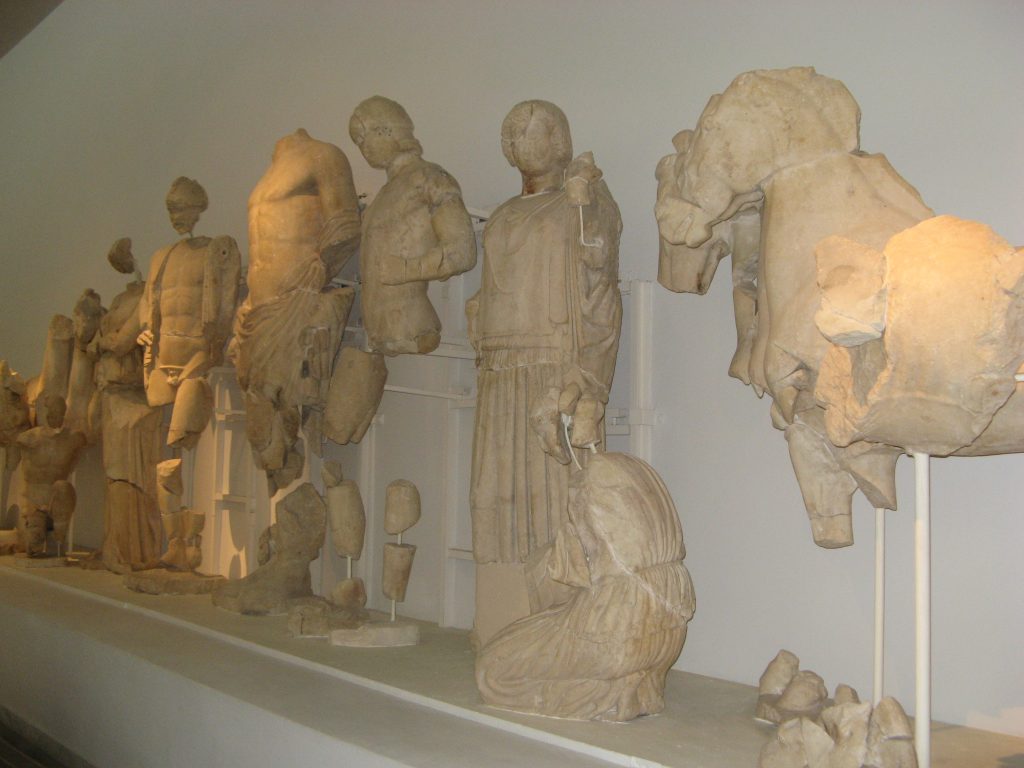
Pelops was the legendary ruler of Pelopennese. He came from Asia and he proposed to Hippodameia, who was the daughter of Oinomaos – the king of the Elean land. Oinomaos, being afraid of a prophecy predicting him being killed by his own son in law, agrees to give her to a man, ho would beat him in a chariot race. Pelops gets winged horses from Posseidon and lures Oinomaos´ charioteer Myrtilus to replace the bronze linchpins on the wheels with fake ones made of bees wax. It is clear that Oinomaos died in this race and Pelops won. He married Hippodameia, became a king and ruled the Peloponnese. Peloponnese = Pelops´ Island.

Praxiteles (flourished 370-330 B.C.) came from Athens and he was celebrated in antiquity as an example of perfection in art. Hermes is one of his last works, it is estimated that it was created appr. in 340 B.C. Well, it is good that it is possible to walk all around the statue in a circle 🙂 This sculpture was discovered by German archaeologists in the ruins of the Temple of Hera in 1877. This statue is regarded as one of the finest works of art of the Late Classical period (4th century B.C.) – the perfect polish of the Parian marble being one of the reasons. And undoubtedly it is the No. 1 of antique depictions of Hermes. And Praxiteles is one of the last great classical Greek scupltors.
Almost certainly he was the son of Cephisodotus, the sculptor, judging according to his origin and education. Cephisodotus created Eirene bearing the infant Ploutos appr. 380-370 B.C. Praxiteles returns to the same composition some 40 years later. But his Hermes overcame him.

Zeus kidnaps Ganymede and we can see him as a human. This is considered to be the most human depiction of Zeus. Zeus, the father of gods is depicted as a pilgrim, walking actively with his stick in one hand while taking Ganymede to Mount Olympus. It is supposed that this work of art was probably a part of the architecture – it could have been an acroterion. It is painted and it has a lot to do with archaic painting. Ganymede resembles kouros statues.

